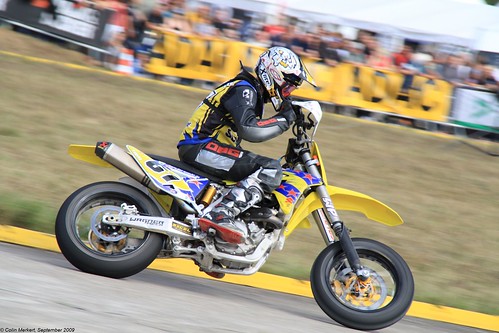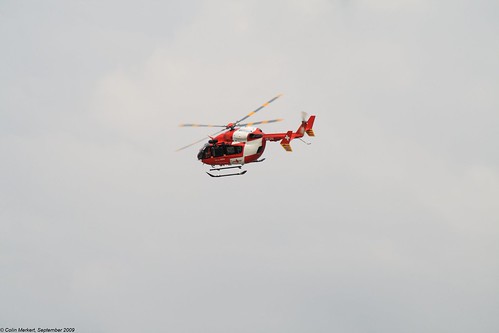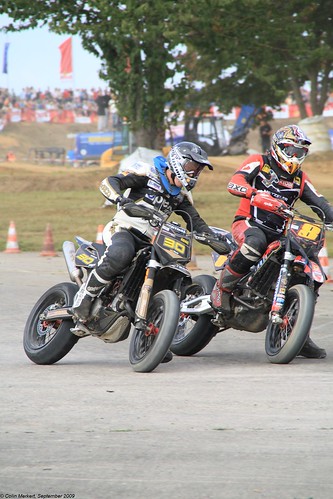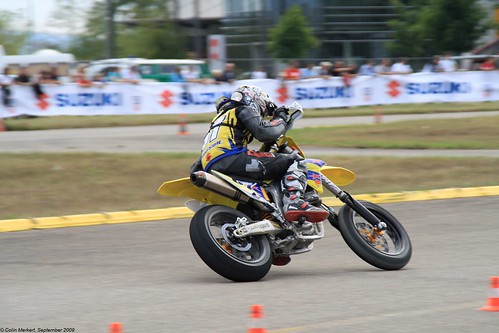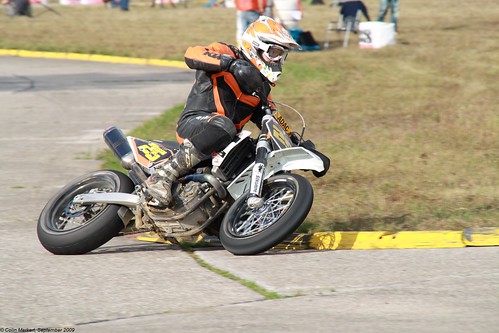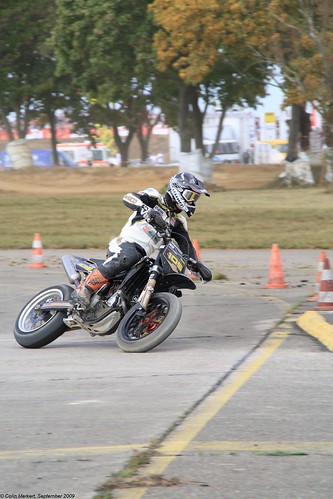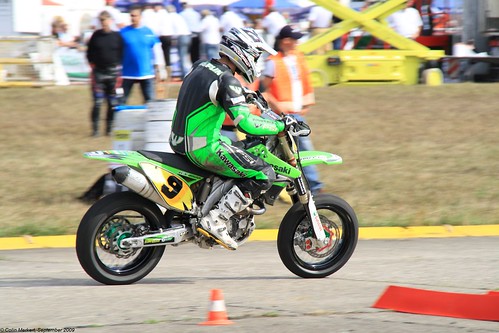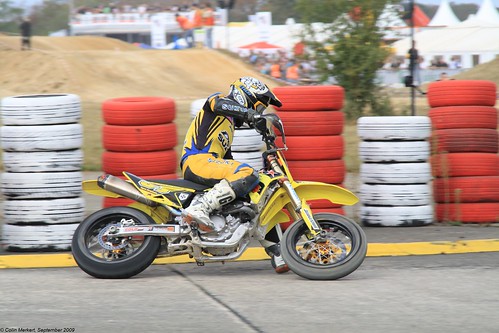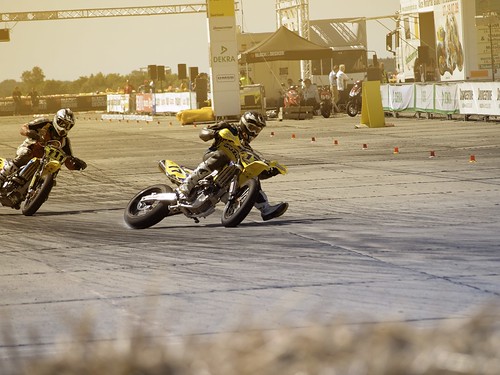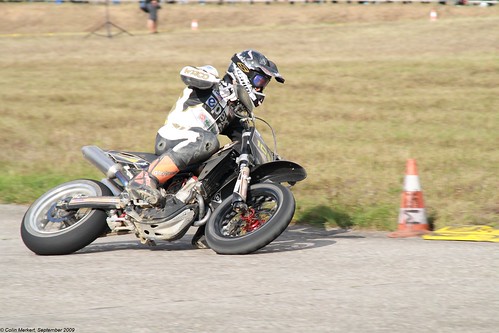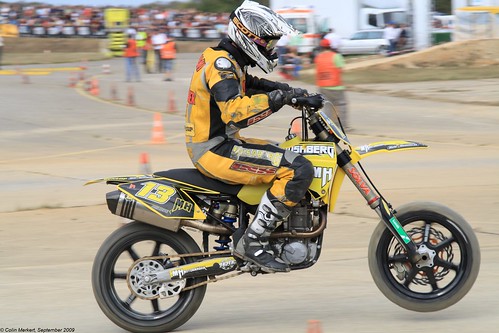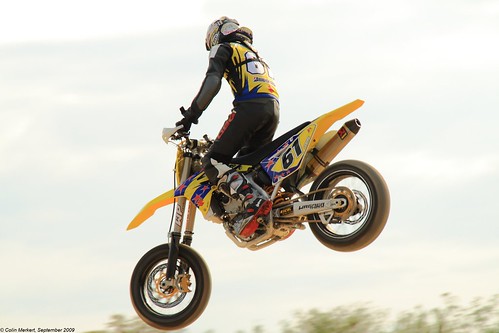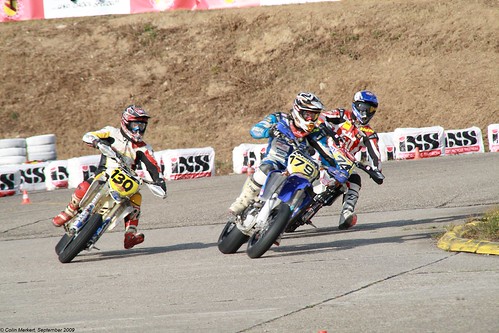I'm not a big fan of labling historical phenomena with merely economical reasons. However, motorsport is one field where money plays a very big role. Motorsport requires sponsorship based on media exposure that would allow it to be profitable. Historically, motorsport has developed from the ancient chariot races of Babylon and later in Rome and Constantinopolis. Within the last ninty years, with petrol-based engines, it has become increasingly greater, in racing cars on closed roads and later in purpose-built circuits.
The development of this sport was in fact almost parallel to the development of road driving technology, and with other areas that are put under the rough outline of "motoring" like aviation and boats, and military usage of all of the above. With the development of motorsport, a positive influence has been noticed relative to the situation of road driving and collisions in the road.
In countries with developed motorsport, people can easily find ways to improve their cars for track use and than set out for track days in weekends. It is considered particularly popular in Europe, and slightly less in the USA and Canada.
Karting
Driving in Go-Karts on small-scale, closed circuits. The Go-Kart is essentially a simplified model of a professional single seater race car. It has a surpringly low self weight and low center of gravity and ride height, no suspension and rear wheel drive, with a direct steering mechanism. The Go-Kart is available in age prior to car license, and can be experienced by children in the age of twelve and above. The little and seemingly feeble car achieves a greater G-force than any road car, and most succesfull race drivers grew in a go-kart.
Autocrossing
An Autocross or Gymkhana is an open tarmac pan, where a small, closed circuit is being formed using cones. The Gymkhana allows to apply Race driving techniques, Rally driving techniques, slaloms -- all at a low speed and while being highly available to ameatures.
Track Racing
The real deal: Racing in closed, bendy tarmac circuits in modified road car (Salon/Touring Racing), or in purpose-built, Open-wheeled, Single-Seater Race Cars (Formula). There are also subdivisions for Endurance Racing (Racing in teams of Swapping drivers for 12 or 24 hours); Racing in Bikes (MotoGP); Oval Racing in Oval-shaped circuits with purpose-built cars (NASCAR); Time Trails and Drifting.
Rally Driving
Rally driving involves driving modified street cars in closed road sections, on tarmac or gravel, and on circuits with segments of gravel (Rallycross). They also include so-called "Rally-Raid" or Navigation racing, where you drive over larger distances in Off-road vehicles from checkpoint to checkpoint (Like the Famous Paris-Decart race). Rally drivers are assisted by a co-driver that reades out notes that describe the road ahead, and they portray a wide bow of driving styles that differ in some ways from normal track driving.
Off-Roading
Driving in Off-Road 4x4 vehicles and passing through rugged and challenging terrain. This is a driving style with distinctivelly different goals, driving styles and calibration of cars, relative to all sorts of tarmac driving and competitive racing in general.
Drag Racing
Racing based on straight-line acceleration is specially modified vehicles. It's origins and great popularity both arrive from the US, where it's being practiced on special drag strips, but it has also become popular on short segments of European race tracks.
Drifting
A Japense driving style that took the joy that so many race drivers take from sliding their cars around the track, and turned it into the competition itself. Drifting is by defintion practiced in Powerfull Rear-Wheel Driven cars with a Limited-Slip Differential, and it is based on judging, relying on both objective and subjective criteria, how well the drivers manage to get across chosen track segments with the car sliding sideways.
Supermoto
Racing is specially modified bikes on tarmac. The bikes are essentialy dirt bikes with adjustments for road driving, used for racing in relativelly low speed, in circuits formed by closing up open areas of tarmac with old tires.
]]>
Motocross
Driving bikes in a track with jumps and other stunts.
Enduro
Oval Racing in Bikes.
The driving style in racing is often believed to be aggressive, risky, fast in all the wrong places, and thus bad as an imitation model for road drivers. This is not true. First, in race driving you don't slide the car. Period. Sliding has been immortalized by hollywood because it looks very nice, and it is a great fun, but it is not fast like clean driving on the verge of sliding.
For this to happen, the driving style must be progressive and smooth. Most advanced road driving courses put a great stress on smoothness, but in fact it is in road driving where smoothness is mainly a reflection of someone's personal idea of finesse. It is in fact on the limit where being smooth becomes tenfold as important, because any jerks will send the car over the limit. This driving style is a very good role model for road driving.
The driving is also very accurate, with reduced overlap between braking, acceleration and turning. This is a good lesson for road drivers who perform "rushed" inputs of brakes, steering and accelerator, which overlap all to much. The driving style is also based on forward vision and observing and planning as early as possible and at the greatest advance possible, which is perhaps the most important lesson for road driivng.
The driving incorprates all elements of traffic, rules, lights, lanes (the driving line on the track) that appear on the road. The race driver learns to adhere rules and to prepare himself and his car for driving based on the highest and most strickt standards. He learns how to behave competitivelly in a positive manner: How to allow another driver to complete his overtake, how to preserve energy and know when to back out, to practice patience, ristraint and decensy.
The drivers who do this kind of activity periodically will enjoy greater levels of concentration and confidence, they will have greater car control in situations of emergency braking, avoidance and slippery surfaces, a need for thrill and risk-taking will be fulfilled by the lap around the track. In fact, by driving around the track one would learn that trying to be fast, hurry up, would increase the lap time because our inputs will become rushed and our techniques will be applied inefficiently.
The motto is "Don't drive fast, drive efficiently and speed will emerge by itself." Even regardless of this, the whole cornering strategy in racing is based on a concept called "Slow in, Fast out", where you enter the corner at a slow speed and in a manner that keeps you ready for surprises beyound the bend.
This is time to distinguish four driving styles in motorsport and what we take from them to our road driving:
Go-Karts: The Go-Kart has additional benefits such as presenting driving as a value from an early age, well before the child earns his/her driver's license. It also builds up fitness and all in a low cost and great availability. The disadvantages are that the Kart is very different from any car: It drives on a closed circuit with quality-pavement and almost zero surprises, where every inch of the track is known by driving around it hundreds of times, and the driver exploites the conditions to the full extent, with little to no safety gap. The track offers run-off areas and the collisions don't cause injury or damage. The driving lines are faster and less efficient for road driving, which has lanes, oncoming traffic, slopes and blind corners.
The Kart rides extremlly low and has a direct, heavy steering which turns about 360 degrees overall. It has no suspension, no drivetrain/clutch, a rear-wheel drive with slick tires, brakes operated with the left foot, usually mounted only on the rear wheels, a significantly different driving position, no passengers or load, no distractions, etc...
Track Driving: Can be more efficient in helping to create a better driving style. The track still suffers from being predictable and the driving inside it is based on exploiting the conditions to their full extent for speed. However, every track driver realizes that his speed must match the conditions. On the track, the conditions simply allow to fully utilize the abilities of the car. The public road does not. Likewise, the track is predictable. Hence, by not being as predictable or known to the driver, no road can be driven like a track.
On the other hand, the track driver will know to take all the elements of vision, pedals, steering, engine, brakes, cornering lines, weight transfers and forces on the car and use them for his advantage and for a greater "reserve" on the road. The same techniques which are used on the track to stretch the limits of the car and track to the edge, are used on the road to maintain the largest possible reserve between the car's abilities and road conditions to the actual driving.
Road Rallying: Rally stages held on tarmac road. These stages propose a driving style which resembles track driving in being smooth, percise and without sliding. With this being said, and with this kind of driving being practiced on a public road, and with specially-modified road cars, it can seem to be the most similar one to road driving, and it greatly is. However, the same elements are shared with track driving, albeit with a greater stress on maintaining a certain reserve and anticipating further ahead.
Nevertheless, there are problems withthis driving style where the rally drivers don't flow with the cars as much as track drivers. They have to take later, sharper lines coming into the corners, so they are forced to turn the wheel later and more rapidly, jerking the car slightly and bringing it closer to the point of sliding. The driving style is based on weight transfers and less on sharing longitudinal and lateral forces.
Dirt Rallying: Dirt rallying forces the driver to drive even more sharply than in road driving. The driver is forced to apply provocative actions and slide the car around some of the corners. Still, the drivers don't slide around as much as one might think. They only slide it enough to rotate the car into the corners. This kind of driving style can also contribute to road drivers in learning car control and how to contro lthe car beyond it's limit. Tight gravel in particular helps because it makes the car reach the limits very early and transition into a state of sliding much more progressively and controlably, with extra "feel."
Motorsport is a sport, both in competitive terms and also, in higher leagues, in physical terms. Like all sports, training with a personal coacher is a must for everyone in a high level. The statistics that show American race drivers as being involved in collisions just as much as other road drivers, are based on the wide spread of motorsport. It became so common and accesible that all sorts of drivers go for track days with little to no instruction, and don't learn anything special from their track experience. Drivers that compete and train with a personal instructor learn a lot about driving, in fields which apply to the road just as much as they do to the track, and therefore they become better and safer drivers.
This kind of instruction does not necessarily belong exclusivelly to the track. Nowadays there is a veriety of advanced or defensive driving courses that base themselves on techniques that derive from race driving and the racing experience of the instructors. These courses can benefit road drivers a lot by teaching them:
- The role of personal responsibility, Awareness, Maturity and other mental qualities
- The significance of proper car maintainence, mainly tires, dampers, brakes.
- Proper driving position, steering wheel grip, concentration in driving
- Steering control, weight transfers and using the forces working on the car
- Smooth, percise and decsivie driving inputs
- Adjusting speed and position to the conditions
- Driving lines
- Observation and planning to avoid stressfull situations by resolving them in advance
- Dealing with other road users and adhering the rules of the road
- Emergency skills (when the above techniques fail to prevent an emergency from happening) like how to perform emergency braking and car control on the limit
Related
Supermoto Articles
